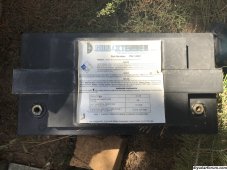I have a 8 x 12V 100 Ah battery bank in 2s4p 24V configuration for my off-grid solar powered home. They are of type Sealed Maintenance-Free.
Worked well for 8+ years, and I guess they are pretty much worn out. One of the pairs started getting hot while charging, so I turned off the system and measured the voltages. 14.06V / 9.45V for that pair. The other pairs were at 13.39V / 13.20V, 13.13V / 13.48V, and 14.44V / 12.16V. Those three pairs were still connected together when I measured. The hot pair is now disconnected.
Is there a way to squeeze a few more months out of the other three pairs before I get a LiFePO4 solution in place? Would rebalancing help at this late stage? Take the bank apart, charge each battery individually to 100% and then put the bank back together.
Worked well for 8+ years, and I guess they are pretty much worn out. One of the pairs started getting hot while charging, so I turned off the system and measured the voltages. 14.06V / 9.45V for that pair. The other pairs were at 13.39V / 13.20V, 13.13V / 13.48V, and 14.44V / 12.16V. Those three pairs were still connected together when I measured. The hot pair is now disconnected.
Is there a way to squeeze a few more months out of the other three pairs before I get a LiFePO4 solution in place? Would rebalancing help at this late stage? Take the bank apart, charge each battery individually to 100% and then put the bank back together.




